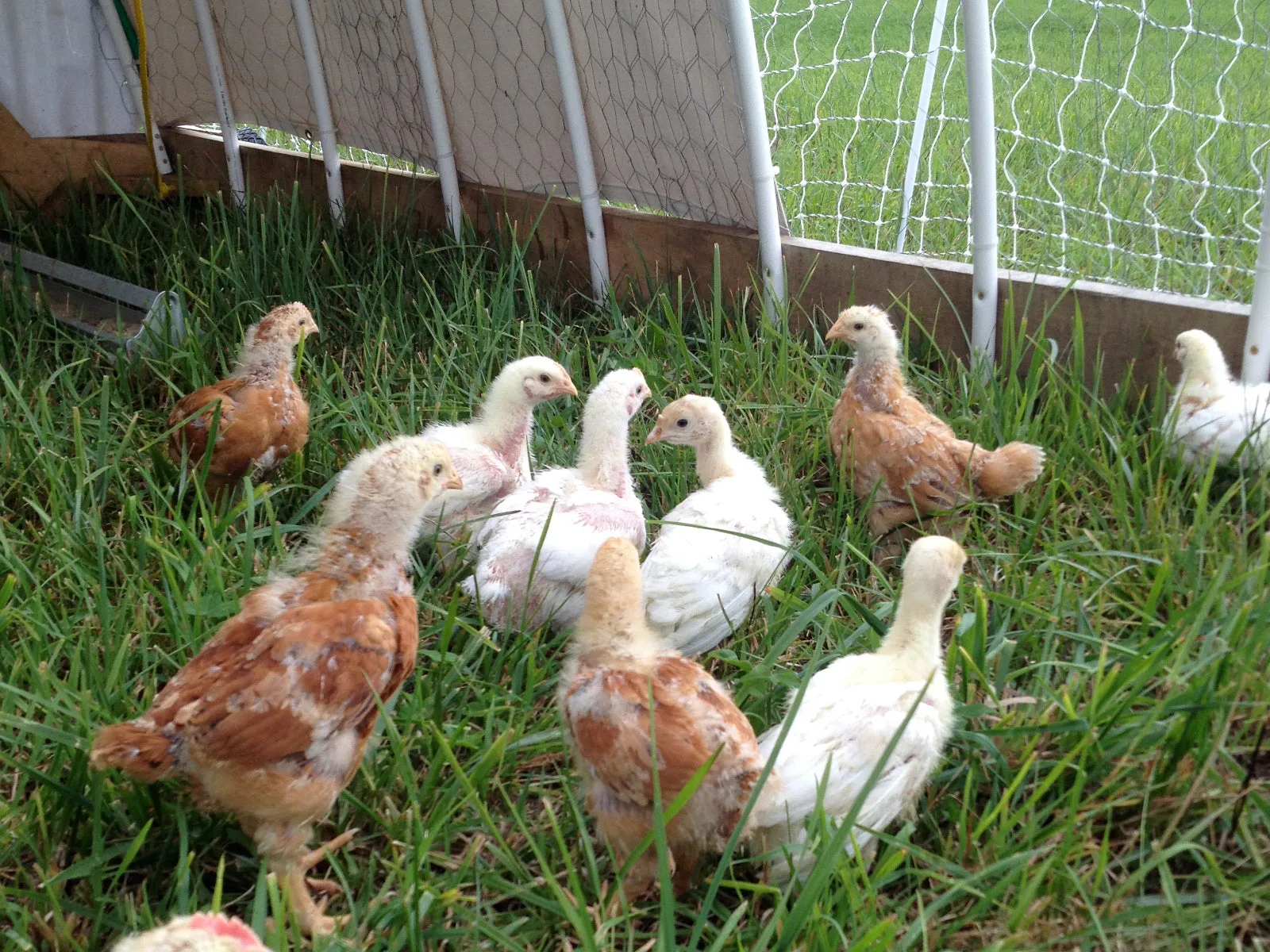We started raising chickens on grass this year for a reason that I don’t hear or read often. We didn’t do it for the chicken. We didn’t do it for the money. We did it for the grass.
Those of you who are familiar with our farm know that while this farm has transitioned through the years from hosting sheep, to cows, to horses, our hayfields have been hayfields for somewhere near 200 years. We’re a hay farm. And we’re a hay farm that has suffered a bit from the extreme efficiency and heavy machinery of modern hay farming. Our fields have become dry, brittle, and compacted after too many years of take, take, take and too few tons of organic material put back.
So, this year, we launched a pilot program that would return animals to the grass—looping grazing animals (and all their benefits) back into the hayfield’s nutrient cycle. After considering sheep, cows, horses, hogs, and other livestock, we settled on beginning our test with chickens for three main reasons:
- The pounds-of-animal-to-pounds-of-manure ratio of broiler chickens is the third-highest among common livestock animals—behind only ducks and dairy cows.
- Chickens are relatively easy to contain and protect from predators. We use a mobile chicken coop to keep the birds safe and focus their sanitation and fertilization efforts.
- Nearly everybody eats chicken.
To begin our test, we chose the driest, patchiest, most brittle, strip of hayfield on the farm. We then built a 10′ x 10′ chicken “tractor” and placed it at the south end of this patch. When the birds were ready, we placed 50 Cornish-Rock Cross chickens inside for 5 weeks—moving the tractor 10 feet north every day, moving them off the previous day’s waste, and giving the chickens access to new grasses, clovers, crickets, grasshoppers, and creepy-crawlies every morning.
An average broiler chicken drops 0.7 ounces of manure per day. So the 50 chickens were able to drop roughly 35 ounces or 2.2 pounds of manure on a 100 sq. ft. section of the hayfield every day. In their 5 weeks on the field, the birds fertilized 3,500 sq. ft. of the field with 77 pounds of manure. Scaled up, that’s equal to 958 pounds per acre, or approximately a half-ton of chicken litter per acre.
This litter is fertilizer we didn’t have to purchase, spread, or truck in. We merely had to feed the birds. (The birds had organic feed from Green Mountain Feeds available to them all day to supplement what they found in the hayfield.)
The Results
We’re thrilled with the early results. Though we realize it is still too early to deem this experiment a total success. Here are some before and after photos.
Before
This patch of ground is from a recently-cut and un-chickened section of the hayfield.

After
This patch of ground is full of the lush, green, 3-or-4-week post-chicken grasses.
We cut our hay this year as we normally would, but swept the mower wide around the chicken strip. The chickens didn’t mind the tractors as much as I feared. There was no boost in our bale count this year, of course, as we only tested this on 350 sq. ft. of field.

Next Steps
Time will tell if the ground the chickens fertilized this year will come back as lush and strong in the spring. If all the benefits of this year’s chicken work is washed away by the snow and spring runoff, we will need to rethink our strategy so that we can mow the hay after it rebounds post-chickens in the same year.
It is our hope that this strategy will: restore our hayfields (slowly), save us money on imported fertilizers, and provide the farm with a profitable income stream from the chickens.
If this hayfield restoration strategy works, and we see lasting results next year, we will continue to slowly build up the number of chickens and chicken tractors to increase the number of square feet we can fertilize per year. I hope over time we can grow to be able to fertilize 10 acres of field every year. That would require 5,000 birds per year and that a new species be added to the list of animals that Pullman Farm has hosted. A new chapter for us, indeed.

